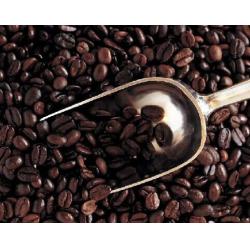Cocoa
Contents
Uses
- Cocoa is the plant from which chocolate is made. Bitter chocolate is produced by pressing roasted cocoa kernels (seeds) between hot rollers.
- Cocoa powder is produced by squeezing the fat (cocoa butter) from bitter chocolate and powdering the remaining material.
- Sweet chocolate is produced by adding sugar and vanilla to bitter chocolate. White chocolate contains sugar, cocoa butter, and milk solids.
- Long regarded as a food treat, cocoa is now used by some people as medicine. Cocoa seed is used for infectious intestinal diseases and diarrhea, asthma, bronchitis, and as an expectorant for lung congestion. The seed coat is used for liver, bladder, and kidney ailments; diabetes; as a tonic; and as a general remedy. Cocoa butter is used for high cholesterol.
- Flavonoids are chemicals that might lower blood pressure. Dark chocolate contains more flavonoids than milk chocolate or white chocolate.
- Some people apply Cocoa Butter to the skin to treat wrinkles and to prevent stretch marks during pregnancy.
- In manufacturing, Cocoa Butter is used as a base for various ointments and suppositories made by drug companies.
Don’t confuse cocoa with coca leaf (Erythroxylon coca).
Benefits
- Cocoa contains a variety of chemicals, including antioxidants called flavonoids. It is not clear how these might work in the body, but they appear to cause relaxation of veins. This could lead to lower blood pressure.
Cautions
- Eating cocoa is LIKELY SAFE for most people. Cocoa contains caffeine and related chemicals. Eating large amounts might cause caffeine-related side effects such as nervousness, increased urination, sleeplessness, and a fast heartbeat.
- Cocoa can cause allergic skin reactions, constipation, and might trigger migraine headaches. It can also cause digestive complaints including nausea, intestinal discomfort, stomach rumbling, and gas.
- Applying cocoa butter to the skin is also LIKELY SAFE for most people. It can, however, cause a rash.
- Pregnancy and breast-feeding: Cocoa is POSSIBLY SAFE in pregnancy and during breast-feeding when used in moderate amounts or in amounts commonly found in foods. But be sure to monitor your intake.
- Cocoa in larger amounts is POSSIBLY UNSAFE because of the caffeine it contains. Caffeine found in cocoa crosses the placenta producing fetal blood concentrations similar to the mother’s levels. Although controversial, some evidence suggests that high doses of caffeine during pregnancy might be associated with premature delivery, low birth weight, and miscarriage. Some experts advise keeping caffeine consumption below 200 mg per day during pregnancy. Keep in mind that chocolate products provide 2-35 mg caffeine per serving and a cup of hot chocolate provides approximately 10 mg.
- Caffeine is also a concern during breast-feeding. Breast milk concentrations of caffeine are thought to be approximately half the level of caffeine in the mother’s blood. If the mother eats too much chocolate (16 oz per day), the nursing infant may become irritable and have too frequent bowel movements because of the caffeine.
- Anxiety: There is a concern that the caffeine in large amounts of cocoa might make anxiety disorders worse.
- Bleeding disorders: Cocoa can slow blood clotting. Consuming a lot of cocoa might increase the risk of bleeding and bruising in people with bleeding disorders.
- Heart conditions: Cocoa contains caffeine. The caffeine in cocoa might cause irregular heartbeat in some people and should be used cautiously in people with heart conditions.
- Diabetes: Cocoa seems to be able to raise blood sugar levels and might interfere with blood sugar control in people with diabetes.
- Diarrhea. Cocoa contains caffeine. The caffeine in cocoa, especially when taken in large amounts, can worsen diarrhea.
- Gastroesophageal Reflux Disease (GERD): Cocoa seems to hinder the effectiveness of the valve in the food tube (esophagus) that keeps the contents of the stomach from coming back into the food tube or the airway. This could make the symptoms of GERD worse.
- Glaucoma: Cocoa contains caffeine. The caffeine in cocoa increases pressure in the eye and should be used cautiously in people with glaucoma.
- High blood pressure: Cocoa contains caffeine. The caffeine in cocoa might increase blood pressure in people with high blood pressure. However, for people who already consume a lot of caffeine, it might not cause a big increase.
- Irritable bowel syndrome (IBS): Cocoa contains caffeine. The caffeine in cocoa, especially when taken in large amounts, can worsen diarrhea and might worsen symptoms of IBS.
- Migraine headaches: Cocoa might trigger migraines in sensitive people.
- Osteoporosis: Cocoa contains caffeine. The caffeine in cocoa might increase how much calcium is released in the urine. Cocoa should be used cautiously in people with osteoporosis.
- Surgery: Cocoa might interfere with blood sugar control during and after surgical procedures. Stop eating cocoa at least 2 weeks before a scheduled surgery.
- Rapid, irregular heartbeat (tachyarrhythmia): Cocoa from dark chocolate can increase heart rate. Cocoa products might also make irregular heartbeat worse.
Interactions
- Most interactions with cocoa are related to cocoa’s caffeine content.
For information on Interactions with cocoa see: http://nutrawiki.org/index.php?title=Caffeine#Interactions
Other Names
Beurre de Cacao, Cacao, Chocolat, Chocolat Noir, Chocolate, Cocoa Bean, Cocoa Butter, Cocoa Oleum, Cocoa Seed, Cocoa Semen, Cocoa Testae, Dark Chocolate, Dutch Chocolate, Fève de Cacao, Graine de Cacao, Theobroma, Theobroma cacao, Theobroma sativum, Theobromine, Théobromine.
References
Source: WebMD, “Cocoa”, web article, user reviewed, www.webmd.com/vitamins-supplements/

